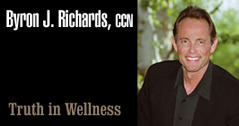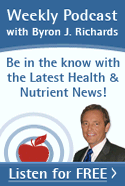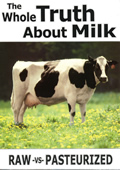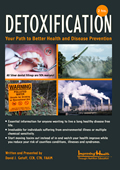BIOIDENTICAL
HORMONES - HELPFUL OR HARMFUL?
PART 1 of 2
By
Byron J. Richards, CCN
July 1, 2009
NewsWithViews.com
Newsweek recently indulged in tabloid journalism, featuring Oprah on the cover with the headline: CRAZY TALK, Oprah, Wacky Cures, & You. The specific emphasis of the article was an attack on Suzanne Somers, Oprah, and bioidentical hormones. The Genie is out of the hormone bottle, consumers are confused, the medical profession is in its typical funk, and somewhere out there is the health-improving truth.
One of the authors of the Newsweek article has her own “traditional” book on menopause and the other is a male in his early 40s – neither has any clinical experience in the subject and can do little more than toss insults and reference conventional points of view on hormones. Newsweek is desperate for sales and is hoping the millions of Oprah followers will purchase the magazine.
Traditional medical people find it extremely annoying, even alarming, that Suzanne Somers and Oprah have generated such massive interest in the subject of bioidentical hormones. After all, there is a legion of baby-boomer women who have no interest in getting older any faster than they have to. Are bioidentical hormones really the “juice of youth,” as Suzanne Somers calls them?
The mafia-like FDA has gotten into the fray, attacking compounding pharmacies at the bequest of pharmaceutical competitors. Indeed, the compounding industry hasn’t ponied up its bribery fees to the FDA. The FDA can’t tell anyone how to practice, but they can regulate health claims and availability of bioidentical hormones.
As a clinical nutritionist I have helped women with bioidentical hormones for over twenty years. I am a believer in the appropriate use of bioidentical hormones, and have witnessed their power to help first hand on many occasions. However, there are clear pros and cons that any woman should fully understand prior to using any type of bioidentical hormone.
Traditional Western Medicine – Lacking Credibility on Female Hormones
Before pointing out what is potentially problematic about bioidentical hormones I must point out what is wrong with the typical group of Western medicine critics. Those supporting this belief system have a recent history of killing and injuring tens of thousands of women with their “official” and FDA-sanctioned use of hormone replacement therapy. In my view, these people have little credibility and should instead be standing trial in a court of law.
And I don’t just mean Wyeth, a primary producer of estrogen replacement therapy (ERT) derived from horse urine, who is still fighting 5000 cancer lawsuits. I’m talking about the prescribing physicians, who often browbeat women to tears if they didn’t want to go on estrogen and progesterone drugs – while selectively ignoring or downplaying the substantial body of risk data that existed prior to 2002.
The FDA can also be thrown into this group of incompetents, as they approved horse urine extract and sat by haplessly watching as women were killed and injured – a problem that continues to this day despite stepped-up FDA warnings.
A major setback for ERT marketing occurred back in July of 2002. Data coming from the Women’s Health Initiative showed that a combination of estrogen from horse urine and non-bioidentical progesterone increased the risk of invasive breast cancer by 26%, strokes by 41%, heart attacks by 29%, blot clots by 100%, and total cardiovascular disease by 22%. Based on the 6 million women taking these drugs in 2002 (2 billion in sales), the data suggests that during only one year there were an extra 4,800 cases of invasive breast cancer, 4,200 heart attacks, 4,800 strokes, and 10,800 blood clots – including 4,800 life-threatening blood clots in the lungs.
Remarkably, Wyeth still sells 1 billion dollars worth of horse urine extract a year, and they continue to try to spin their estrogen/progesterone drugs as safe. Making matters worse, the marketing of these drugs was based on fraud in the first place.
There were only a few thousand women taking estrogen back in 1966. That number changed dramatically with the release of the book Feminine Forever, by Dr. Robert A Wilson, a New York gynecologist. In the book Dr. Wilson attributed all undesirable aspects of aging to a lack of estrogen – while downplaying and trying to explain away the troubling link to cancer.
Dr. Wilson quit his practice and set up a foundation to promote his ideas. He and his wife went around the country giving seminars and his book received wide media coverage in major magazines. The book became one of the first off label marketing pieces, freely given out to doctors as a promotional tool.
What was not known at the time was that the drug company that is now Wyeth (Ayerst Laboratories) was funding the foundation.
Throughout the 1990s I was an outspoken critic of ERT – a minority view that was based on basic science the medical profession couldn’t seem to grasp.
It was well established that increasing a woman’s exposure to her own estrogen, such as starting menstruation before age 12, increased the risk of breast cancer. Anything that produces higher serum levels of estrogen places a woman into this risk. It was basic common sense that extending a woman’s exposure to estrogen through ERT was going to place her into a similar risk pattern due to extended estrogen exposure.
Female cancer risk, especially breast cancer risk associated with estrogen replacement therapy had been reported for many years, and was extensively reviewed back in 1999. This data did not deter a majority of doctors from prescribing and pushing ERT on women with menopausal symptoms.
Even worse, the typical dose of estradiol at that time was .625 mgs taken every day (today it is .3 mgs). In normal menstruation a woman is exposed to .4 mgs of estradiol for a few days every month around her ovulation. Thus, this Wyeth-promoted prescribing practice exposed women to much higher levels of estrogen than she ever made naturally. Furthermore, the Wyeth product also contains all sorts of horse estrones that are totally unnatural for a woman. The FDA twiddled its thumbs.
Adverse data on Wyeth’s hormone drugs continues to pile up, with a recent study showing that their ERT nearly doubles the risk for lung cancer.
Another common problem with ERT (and birth control pills for that matter) is weight gain, which doesn’t always happen to everyone but happens so often that it is a major concern. Doctors used to tell women that ERT was good for their heart even while they were gaining 15 pounds – it just didn’t add up – credibility was woefully lacking. Weight gain, especially after menopause, is also linked to an increased risk of breast cancer.
I should also point out that the actual risks of birth control pills are still unknown, even though they have been used by millions of women for decades. One recent study presented at an American Heart Association meeting showed that for every 10 years of birth control pills there is a 20 – 30 percent increase in peripheral artery small plaques.
It is also known that women have ten times the rate of autoimmune disease as men – due to imbalanced and excess levels of estrogen. This is because estrogen (estradiol) suppresses T suppressor cells, leaving them out in the circulation longer and more likely to adversely react to inflamed tissue. It wasn’t long before lupus was reportedly caused by women taking horse urine extract. This information is likely to apply to any autoimmune disease – if researchers bothered to study the issue.
The medical use of ERT, as pushed by various drug companies, condoned by the FDA, and adamantly pushed on many women by doctors, was a clear violation of the most basic creed of a physician to first do no harm. It is an example of a lack of intelligence and inability to predict the obvious consequence of known principles of biochemistry relating to the drugs they prescribe, a problem that continues to plague their Big Pharma-sponsored profession.
Any woman seeking to understand how to use bioidentical hormones to support her health should also understand this history, and know that the FDA, drug companies, and the medical profession itself have very little credibility or useful information to offer on this subject. Thus, the trite phrase to “consult your doctor” on the subject of female hormones is a pointless waste of time and may even be dangerous to your health.
Female Hormone 101
I view the safety issue surrounding bioidentical hormones as one of consumer education. There are a number of essential points any woman should clearly understand about what her body is doing and what that means. Let’s begin at the beginning, with a basic understanding of hormones and general health.
In the first two weeks of your menstrual cycle your brain releases a hormone signal called FSH (follicle stimulating hormone), which travels to your ovaries and ripens an egg. As your egg ripens it releases estradiol, a form of estrogen required for normal reproductive function. As estradiol levels rise in your blood it signals to your brain that an egg is ripe. Once your brain knows this it switches to an androgen signal called LH (luteinizing hormone), which stimulates the release of your egg. For the second half of your menstrual cycle the follicle that was housing your egg now produces progesterone (from what is called the corpus luteum). Progesterone helps attach protein to the wall of your uterus should you become pregnant. Estradiol is coordinating the proliferation of tissue that makes this process possible.
If you are not pregnant then progesterone production stops, in turn starting the sheathing of the protein build-up off the wall of your uterus – which is your menstrual cycle.
Your menstrual cycle is energy intense. You have to put a steak dinner’s worth of protein onto the wall of your uterus every day. If you don’t eat enough protein, especially the week before your menstrual cycle, then your body will take apart muscle proteins and even the neurotransmitter proteins that keep your mood elevated. A lack of dietary protein is the most basic nutritional reason for a poor mood associated with PMS.
In addition to protein other foods most commonly lacking from the diet of any woman with any type of PMS are fruit, vegetables, and essential fatty acids. The greater the junk food and sugar content of her diet, the more likely there are to be problems. As stress and/or physical demands increase, problems multiply and dietary weaknesses become more important.
Anorexia and excessive exercise are two issues in young women that reflect inadequate protein nutrition for the menstrual cycle, typically resulting in no cycles, erratic cycles, or skipped cycles.
On the other hand, as a woman gains weight then the efficiency of hormone signals, including signals to her ovaries, are less efficient and more at risk for problems developing.
Other basic nutrition includes B vitamins, calcium, magnesium, and iron. B vitamins are needed to assist protein to work correctly, as well as to help offset stress. Calcium and magnesium are vital for a pain-free menstrual cycle, and along with essential fatty acids their lack is the most common reason for menstrual cramps. Iron is often lacking in women who eat little or no red meat, who exercise a lot, or who have heavier menstrual cycles. A lack of iron will cause fatigue that is aggravated as the menstrual cycle progresses and can produce almost every symptom of hypothyroid, including weight gain.
A goal that reflects health is that your menstrual cycle comes and goes every month with a minimal amount of trouble or distraction. Your menstrual cycle receives a higher demand for nutrition than any other system in your body, as this is all about survival of the human race. It is a monthly test of how well you did ALL MONTH LONG managing your overall health.
If you are approaching menopause and you have a long-term history of problematic menstrual cycles, you have more risk associated with the use of estrogen to suppress or modulate uncomfortable symptoms. You are also more likely to have more hot flashes.
What is Estrogen Dominance?
Any woman of menstrual age, including women who are pre-menopausal, should do everything in their power to reduce the symptoms of estrogen dominance. This is vital for reducing the risk of any type of female cancer and autoimmune disease.
The symptoms of excessive estrogen are any of the following: heavy menstrual cycles, excess clotting with menstrual cycle, abnormal bleeding/spotting between cycles, breast swelling and tenderness, fibrocystic breasts, endometriosis, fluid retention, or headaches with cycle.
Oftentimes women with a history of estrogen dominance end up with a partial or complete hysterectomy. Gall bladder problems are also typical, as surplus estrogen super-concentrates cholesterol in their gall bladder causing sludge and stones. Cellulite is always made worse by excess estrogen and in some cases estrogen dominance problems may be the cause of cellulite.
The following is a list of the primary topics that contribute to or cause estrogen dominance, besides the basic nutritional deficiencies listed in the previous section. Many women have problems in all of these areas.
1) Extra pounds of fat.
Fat cells produce another form of estrogen called estrone. Think of estrone as a buffer to help regulate blood levels of estradiol. In other words, estradiol can be converted into estrone to “store it” and estrone can be converted to estradiol to “make it active.” Having a back up system to maintain levels of needed estradiol for reproductive purposes is vital.
Remember, women have a naturally higher percentage of body fat than men so as to have the available energy to feed a child – a survival necessity. Fat serves multiple roles in this grand plan. Gaining extra weight messes this up, not only producing excessive amounts of estrogen, but hormones in general become resistant to normal communication with each other. This sets up a highly inflammatory and pro-carcinogenic health-risk situation.
Problems with excessive amounts of the fat-hormone leptin drastically aggravate ovarian function and can make female hormone function miserable (such as causing polycystic ovarian syndrome). Losing weight in a healthy way, if overweight, is vital for normal female hormone function.
2) Estrogen-like chemicals.
Estrogen-like chemicals pose a grave threat to female and male health. Bisphenol A from plastics is one example, many of the pesticides used on food is another, and Monsanto’s PCBs are yet another. These tend to absorb into fat and interact with estrogen receptors. They likely play a large role in the earlier onset of menstruation in young women, and they certainly pose a serious female cancer risk – especially in women with genetic susceptibility.
Compounds that protect your liver and help you clear these toxins are now general dietary recommendations simply for protection – since our government has no guts to make any big company clean up their environmental trash. Nutrients like Milk thistle extract, chlorella, and R-alpha lipoic acid are top choices, as is the dietary intake of a wide variety of vegetables. The greater an individual’s chemical sensitivity, the more likely there are to be problems with toxins and adverse female hormonal interactions.
3) The failure to clear estrogen – digestive problems.
Estrogen levels peak mid cycle and are then cleared out of your blood by your liver. Your liver binds estradiol to another compound, a process known as conjugation. This package is then sent through your bile, through your gall bladder, into your digestive tract, and hopefully out. A major problem occurs when there is an overgrowth of unfriendly bacteria in your gut – typically reflected by symptoms of gas, bloating, constipation, irritable bowel, etc. In this situation the bacteria can “eat” the conjugation bond, causing estradiol to be released in your digestive tract and to re-enter your general circulation.
This problem is a common source of excess estrogen. It is almost always happening in cases of inappropriate estradiol-drive tissue proliferation like endometriosis, as well as cyst formation – and of course cancer risk. Extra dietary or supplemental fiber and acidophilus are basic steps to help. Digestive problems may need a more significant strategy for improvement – and solving them is vital to female hormonal health
4) Pregnancy.
Even a healthy pregnancy can act as a jolt to hormone balance. While some women find their menstrual cycles actually run better after pregnancy, far more are likely to find symptoms of estrogen excess have now begun even though they did not exist prior to pregnancy.
In essence, the routine demands of pregnancy are a form of stress to metabolism, thyroid function, and female hormones. The typical result is a lack of progesterone, described next. However, full energetic and metabolic repair following pregnancy is always a good idea, so that pregnancy is not noted as the time when your health started to decline (a common finding for many women). This is oftentimes quite a challenge as women try to juggle the demands of children, working, sleeping adequate hours, and maintaining good self-care habits like exercise.
5) The lack of progesterone – too much stress.
One function of progesterone is as a natural balancing compound to estradiol. The precursor compounds for progesterone production are also used to make adrenal hormones that combat stress. If stress is too high, or a person is too malnourished, progesterone may be converted into stress-fighting hormones. Unfortunately, this leaves estradiol levels high due to the relative lack of progesterone.
By supporting adrenal health and managing stress better, progesterone is spared this fate. Almost every woman knows that if she has had a more stressful or physically demanding month, then symptoms of PMS or menopausal hot flashes are likely to be worse. Basic nutrition for adrenals includes higher dietary protein, B vitamins – especially pantethine, vitamin C, Q10, and essential fatty acids like DHA.
Bioidentical Progesterone Can Help
Over the past three decades the use of bioidentical progesterone cream has been a popular health option to help women overcome issues of estrogen dominance as well as symptoms of menopause, an approach made popular by John Lee, M.D. In order to maximize the likelihood that such an approach could be of use to you it is important to understand your overall health (are you estrogen dominant and why), as well as the dose and type of progesterone to use.
Bioidentical progesterone is available in OTC creams, through compounding pharmacies, and by traditional prescription.
There are also non-bioidentical forms of progesterone drugs which are very dangerous and should never be used. It has been demonstrated that non-bioidentical progesterone increases the risk of cancer, whereas bioidentical progesterone has the opposite effect and is protective.
Progesterone drugs like Wyeth’s Provera (medroxyprogesterone acetate), which was implicated in the Women’s Health Initiative study along with horse urine extract, exist so that drug companies can patent something to sell, not because it is good for your health. Provera is not bioidentical, and is associated with highly toxic side effects including almost every symptom of estrogen excess!
The OTC creams have been on the market for three decades – and I personally have used them with thousands of women. Bioidentical progesterone is synthesized from wild yam. It is from a natural source. It is now synthetic and bioidentical, meaning it was changed from the precursor molecules in wild yam into the identical progesterone hormone that your body produces. Most OTC products contain 20 mg of progesterone per ¼ tsp.
These products fall into a gray regulatory area as far as the FDA is concerned. The FDA allows them on the market as cosmetic moisture creams. Companies selling them cannot explain that the progesterone (or estrogen in the case of an estrogen-containing cream) is absorbed or has any effect on a woman’s health. Otherwise, the FDA will view that company as selling an unapproved drug. In other words, the FDA allows the cream products on the market but doesn’t want you to understand how to use them. This is of course better than not being on the market at all – and there is legitimate concern the FDA could reverse its decades-long policy – which would be detrimental to the health of many women who rely on these creams for noticeable health benefits.
While studies on progesterone creams show them to be safer than drugs, their effectiveness at quenching menopausal symptoms is up in the air. A number of studies support benefits, and others do not. This is because studies do not separate women according to their overall health and degree of estrogen dominance, health history, etc. In other words, the source of many estrogen dominance issues is not a lack of progesterone and a woman would be better off addressing such an issue or at least working on it while simultaneously trying some progesterone. Progesterone will never be a “one stop solution.”
As can be seen from the previous section on estrogen dominance, any woman could be having multiple reasons for estrogen excess. These symptoms will have a monthly severity – how bad are they? They will also have a trend – how long have they been going on? Simply giving progesterone may or may not work. The best approach is improving any obvious issues that could be causing estrogen excess. The use of progesterone would be part of an adrenal, thyroid, and stress support protocol, not the only thing being done. Many times, women would find they don’t need any progesterone when their adrenal function, thyroid function, and stress demands are in better shape.
Another key to the safe use of bioidentical hormones is to use an amount that is at or below what your body would normally produce. For example, during the second half of your menstrual cycle your ovaries produce around 25 mg of progesterone a day.
It is not known exactly how much progesterone is absorbed through the skin creams; however, it is likely to be less than half. One study using 40 mg of progesterone cream each day found that blood levels never rose higher than normal production, while being very effective at reducing the symptoms of menopause. Another study showed that 80 mg of cream per day raised blood levels similar to a 200 mg oral capsule of the prescription drug.
There are three basic menstrual situations for any woman using progesterone; a) she is having regular cycles, b) she is no longer having cycles, c) she is in limbo land and never knows if or when the next cycle will come.
Progesterone cream for regularly menstruating women of any age can be a miracle. It is extremely beneficial for almost any symptom of PMS or estrogen dominance – especially nasty menstrual headaches. 40 mg of progesterone cream has been shown to be protective against surplus estrogen exposure. As such, it is always worth a try for any woman who is having difficulties. In my experience it is likely to be of help more than 75% of the time, especially when used as part of a program for overall health improvement.
Most women use ¼ tsp per day from day 14 of the month (day 1 is the first day of your period), until day 28 (or the day your period starts). Some women find it helpful to go to ½ tsp per day from days 21 – 28, to help with stubborn symptoms.
It is relatively easy to judge if such an approach is helpful or not. The most common side effect is getting a headache (rather than getting rid of one). Other women find that it just doesn’t help or may even seem to aggravate symptoms. In such cases, the progesterone obviously isn’t working, so don’t use it.
Common sense tells you that if it helps, and you are using a dose that is at or below what your body naturally produces, then you have found a safe support system for hormonal balance. If that isn’t happening, even if you have a lab score with low progesterone or all the symptoms of estrogen dominance, you need to find a different solution. Don’t go on month after month doing something that isn’t helping.
During menopause, especially to help lower hot flashes and support mood, it is typical to try ¼ to ½ tsp of progesterone every day. Once again, this either helps or not. If you can’t tell a significant benefit, free of any undesirable side effect symptoms, then I wouldn’t use it. It is far more typical that progesterone is more helpful than not – but if for some reason it isn’t doing the job then move on to something else.
Women with erratic menstrual cycles during menopause will often use progesterone to stabilize mood and help hot flashes, and they typically use it every day. In some cases your body may be trying to run a menstrual cycle, and you could be feeling bloated or like a cycle is trying to come but it just isn’t happening. This is a sign to try stopping the progesterone for a few days, which will often allow a menstrual cycle to occur.
Many women also use progesterone as part of a natural bone support program, since progesterone helps activate the osteoblasts that build bone. A study of postmenopausal women has shown that in women with osteoporosis the use of progesterone prevented further bone loss. However, women also taking soy negated the beneficial effects of progesterone (soy is also anti-thyroid).
You do not need a lab test to measure your progesterone if you are following the guidelines I have laid out above and you are keeping your use of the hormone within a natural level of your body’s production and you are paying attention to whether it is helping. Ideally, you should be simultaneously working on improving your health in general and not just relying on progesterone to fix your problems.
Summary
Progesterone is the most commonly used bioidentical hormone, with over three decades of use in the United States. In order to get the most benefit from using this hormone you should understand the subject of estrogen dominance and what factors may be contributing to any problem you are having. It is well advised to work on these issues, along with any use of progesterone. It is safest to use any bioidentical hormone at or below the level your body naturally produces. Higher levels are unpredictable and as unnatural as hormone drugs.
|
Subscribe to the NewsWithViews Daily News Alerts! |
The second part of this article explains hormones and aging in greater detail, including the risks associated with growth hormone, DHEA, and testosterone. The safe use of estriol is explained, the only form of estrogen replacement women should consider. For part two click below.
Click here for part -----> 2,
















